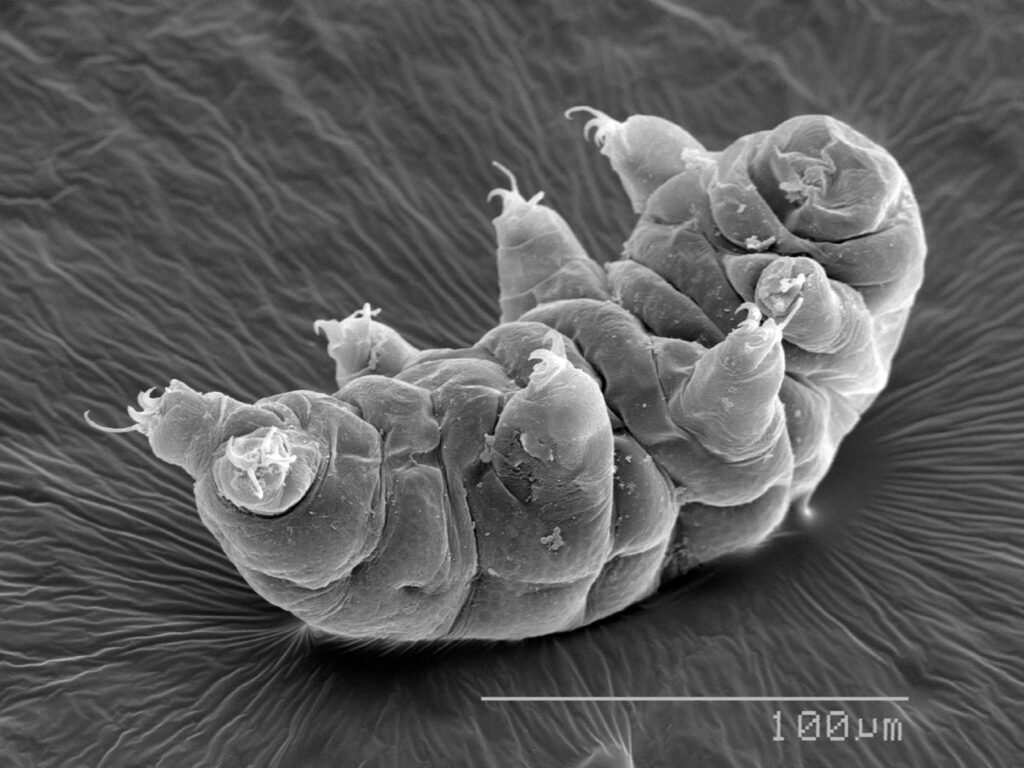Researchers at Massachusetts Institute of Technology (MIT), Brigham and Women’s Hospital, and the University of Iowa have developed a strategy that could help mitigate radiation-induced damage by harnessing a unique protein found in tardigrades, microscopic organisms renowned for their resilience.
Their study entitled, “Radioprotection of healthy tissue via nanoparticle-delivered mRNA encoding for a damage-suppressor protein found in tardigrades,” was published in Nature Biomedical Engineering.
Radiation therapy is a component of treatment plans for about 60% of cancer patients in the United States, but it can cause debilitating side effects. These side effects “can manifest as something as simple as mouth sores, which can limit a person’s ability to eat because it’s so painful, to requiring hospitalization because people are suffering so terribly from the pain, weight loss, or bleeding,” lamented co-senior author James Byrne, MD, PhD, assistant professor of radiation oncology at the University of Iowa.
“There’s an unmet need with respect to helping patients mitigate the risk of damaging adjacent tissue,” concurred co-senior author Giovanni Traverso, PhD, associate professor of mechanical engineering at MIT and a gastroenterologist at Brigham and Women’s Hospital.
“We’ve long been fascinated by the incredible resilience of tardigrades—organisms that thrive under conditions lethal to most life forms,” Traverso told GEN.
Tardigrades, often referred to as water bears, can survive radiation exposure thanks to the damage suppressor protein, Dsup, which binds to DNA and shields it from radiation-induced breaks.
“The Dsup protein, which binds directly to DNA and reduces radiation-induced strand breaks, immediately struck us as a promising tool to mitigate normal tissue injury during radiotherapy,” Traverso explained.
Inspired by the protective function of Dsup, the researchers investigated whether it could be delivered to tissues to protect cells from DNA damage. Rather than injecting the Dsup protein directly, they focused their efforts on delivering mRNA to tissues to temporarily produce the Dsup protein. This approach would provide short-term protection during radiation treatment without permanently altering the cells or DNA.
To improve mRNA delivery and transfection efficiency, the team screened various nanoparticle formulations, combining polymer and lipid components. Ultimately they identified two delivery particles optimized for delivery to the colon or oral tissues. When injected into mice, these nanoparticles successfully delivered Dsup-encoding mRNA, resulting in temporary protein expression in the targeted tissues.
“We thought that perhaps by combining these two systems—polymers and lipids—we may be able to get the best of both worlds and get highly potent RNA delivery,” said first author Ameya Kirtane, PhD, of Harvard Medical School and MIT.
To test its protective effects, researchers injected the nanoparticles into the mice several hours before a radiation dose intended to mimic cancer therapy. Treated mice exhibited a 50% reduction in DNA strand breaks in their oral and rectal tissues. Not only was the treatment effective in reducing tissue damage, but these effects remained localized to the injected tissues, ensuring that tumor cells were not also protected from the radiation treatment.
This study represents a significant step toward developing protective therapies for patients undergoing radiation treatment. “One of the strengths of our approach is that we are using mRNA, which just temporarily expresses the protein, so it’s considered far safer than something like DNA, which may be incorporated into the cells’ genome,” Kirtane said.
“We are excited to expand our research in several directions,” Traverso told GEN. “In addition to investigating whether our approach can protect other normal tissues from DNA-damaging therapies, we’re actively exploring ways to enhance the duration and efficiency of Dsup expression.”
Traverso outlined key aspects of their prospective approach, including improving localized delivery and managing immunogenicity by engineering a human-compatible version of Dsup to minimize an immune response. The team is also taking manufacturing and scalability processes and limitations into consideration with their designs.
“This expanded research direction not only broadens the clinical applicability of our platform but also underscores its versatility in addressing a range of pressing medical challenges,” he said. If successful in human trials, this approach could transform radiation therapy by allowing higher doses to be used more safely, ultimately improving outcomes for cancer patients. Beyond cancer therapy, the use of Dsup treatments could also protect astronauts from space radiation and reduce DNA damage caused by chemotherapy.
Traverso is optimistic about the many avenues of research to come, while also reflecting on the present study. He commented that observing the results of reduced tissue damage with Dsup mRNA treatment “was a breakthrough moment that truly highlighted the promise of harnessing nature’s own protective mechanisms to address complex challenges in cancer therapy.”

